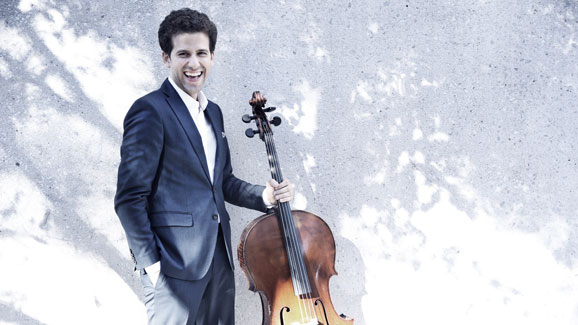From Struggle
to Victory
Season Subscriptions are currently on sale, to purchase call Patron Services 203.325.1407 x10
Questions? Email Patron Services at office@stamfordsymphony.org

From Struggle
to Victory
Season Subscriptions are currently on sale, to purchase call Patron Services 203.325.1407 x10
Questions? Email Patron Services at office@stamfordsymphony.org

From Struggle
to Victory
Season Subscriptions are currently on sale, to purchase call Patron Services 203.325.1407 x10
Questions? Email Patron Services at office@stamfordsymphony.org

Time to event
Duration
2 hours
with a 20 minute intermission
Share With
Behind the Baton
Learn more about the program during this pre-concert talk hosted by Music Director Michael Stern. Behind the Baton begins one hour before each concert at the Palace Theater.
This event is FREE with your ticket to the concert.
About this performance:
Perhaps the most famous piece for orchestra; the most majestic of cello concertos, and two contrasting contemporary pieces, by Mexican composer Alejandro Basulto and Atlanta native, Carlos Simon, make this a concert of discovery and exhilaration!
Carlos Simons, writes: “This piece was inspired by a journal entry from Beethoven’s notebook written in 1815. Quoting from the Iliad, he wrote:
“But Fate now conquers; I am hers; and yet not she shall share In my renown’ that life is left to every noble spirit. And that some great deed shall beget that all lives shall inherit.”
Simons further stated “Using the beautifully fluid harmonic structure of the 2nd movement of Beethoven’s 7th symphony, I have composed musical gestures that are representative of the unpredictable ways of fate. We know that Beethoven strived to overcome many obstacles in his life and documented his aspirations to prevail, despite his ailments. Whatever the specific reason for including this particularly profound passage from the Iliad, in the end, it seems that Beethoven relinquished to fate. Fate now conquers.”
What took four years for Beethoven to compose to many appears as a struggle from darkness to light despite today’s view that Symphony No. 5 is considered the most recognizable orchestral composition of all time.
Musical Program to include:
Alejandro Basulto Fanfarria de Feria
Dvořák Cello Concerto
Nicholas Canellakis, cello
Carlos Simon, Fate Now Conquers
Beethoven Symphony No. 5
Michael Stern, conductor
A Message From Music Director Michael Stern
This concert has been generously sponsored by:

Featured Artists:
Nicholas Canellakis, cello








